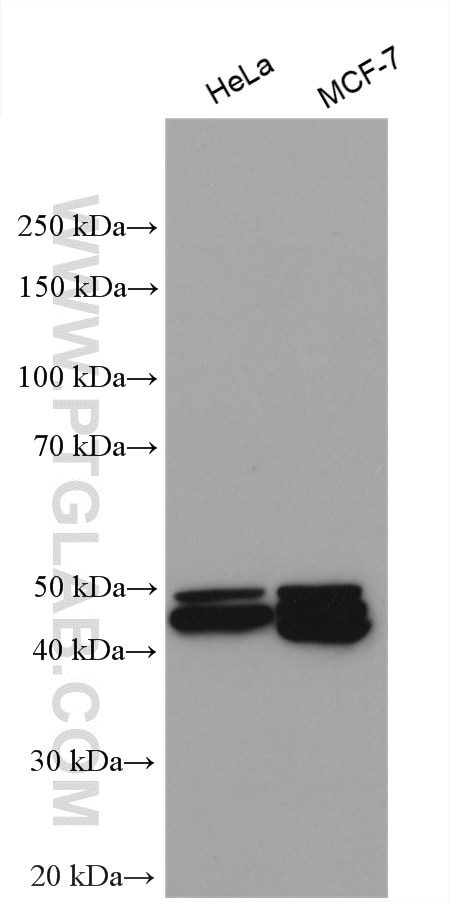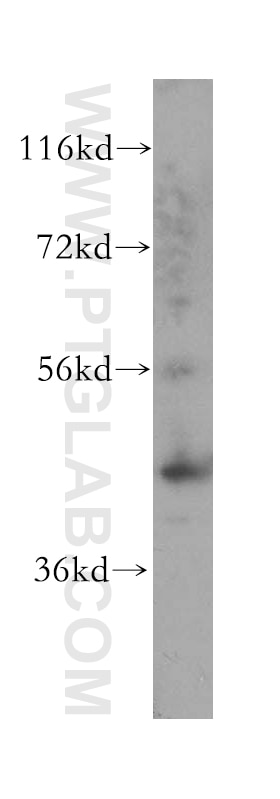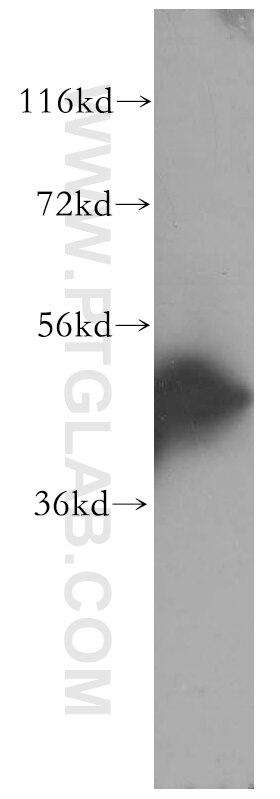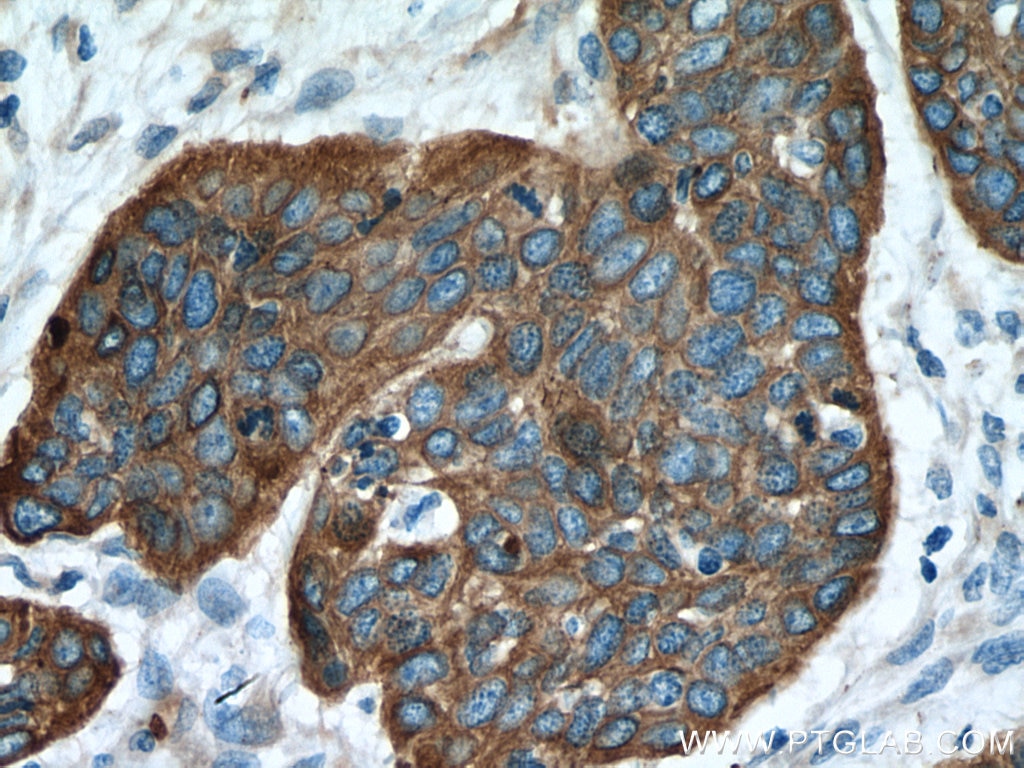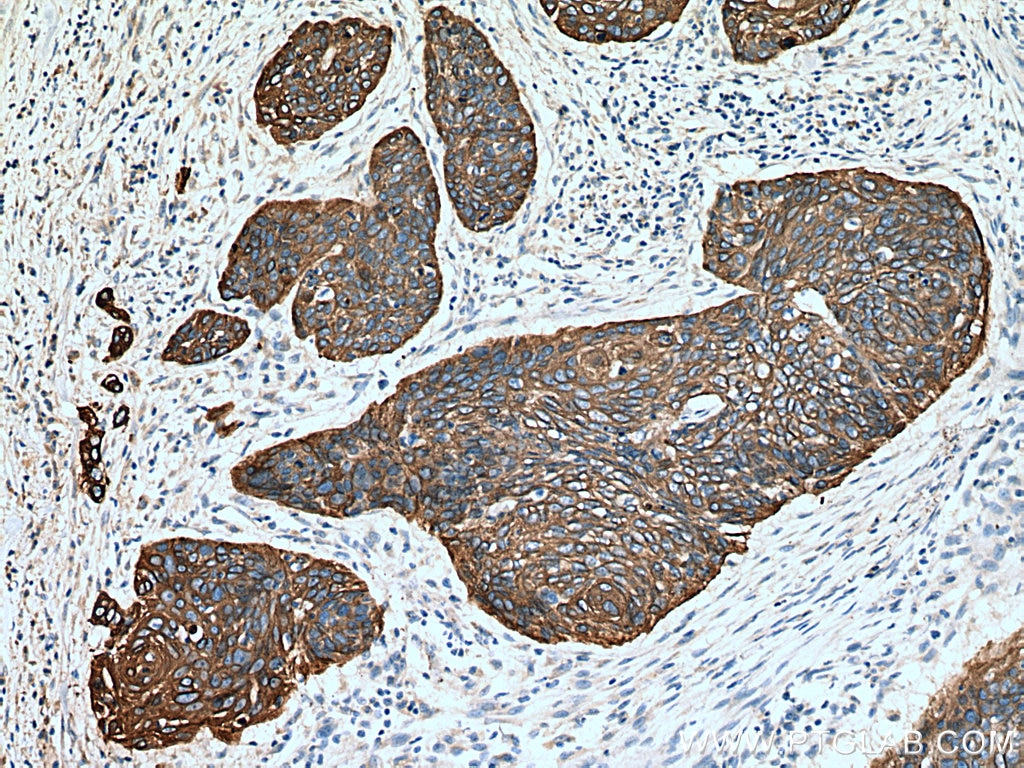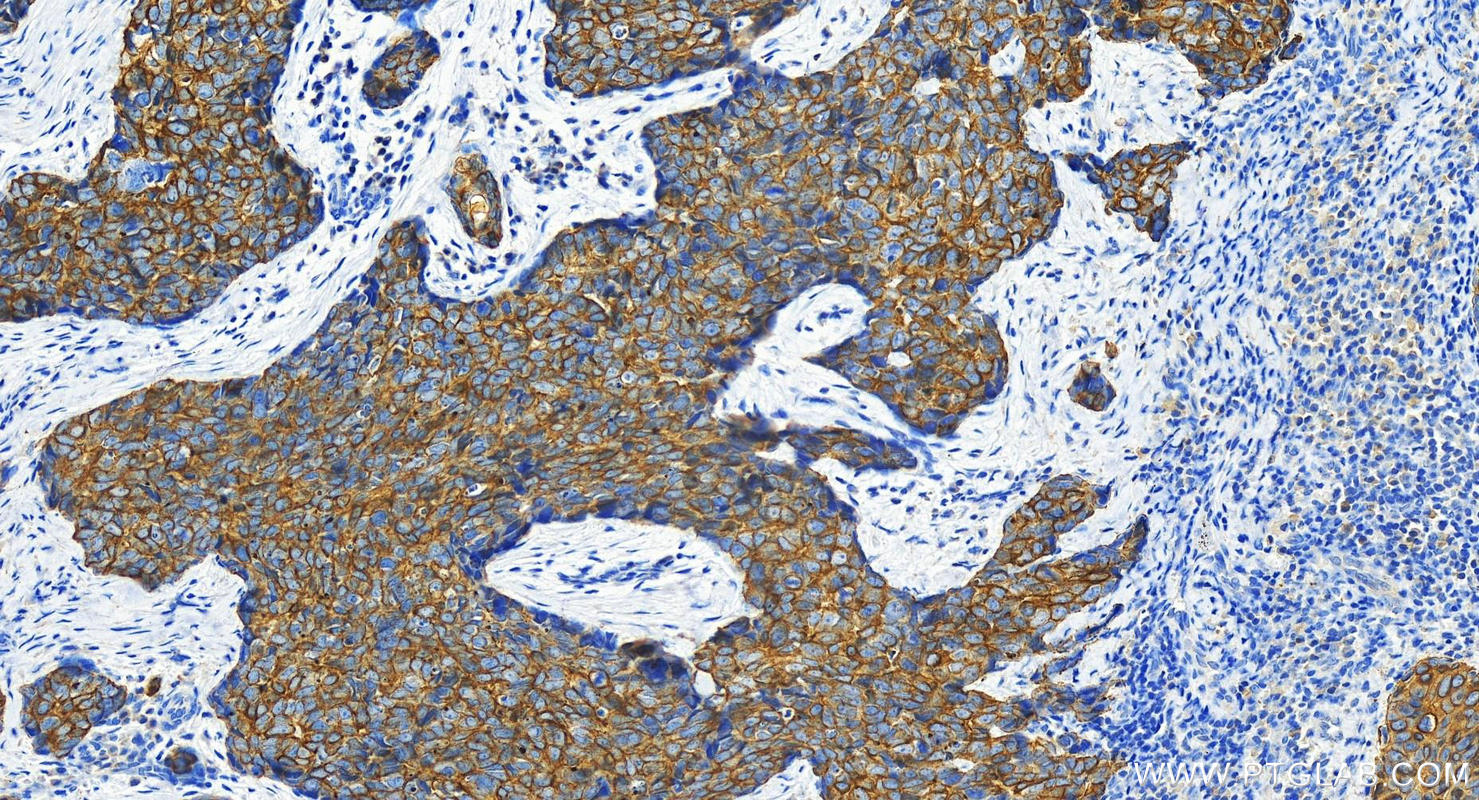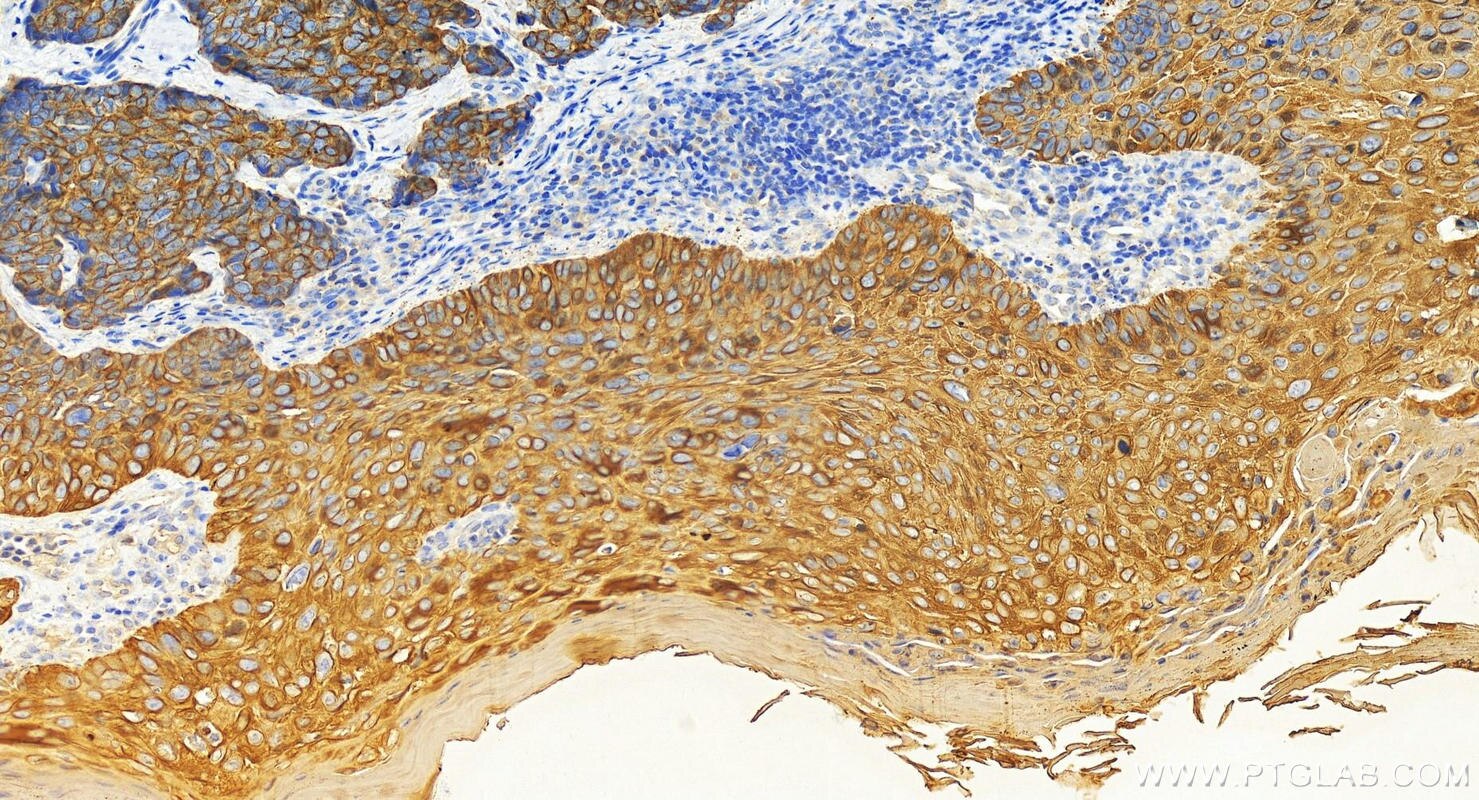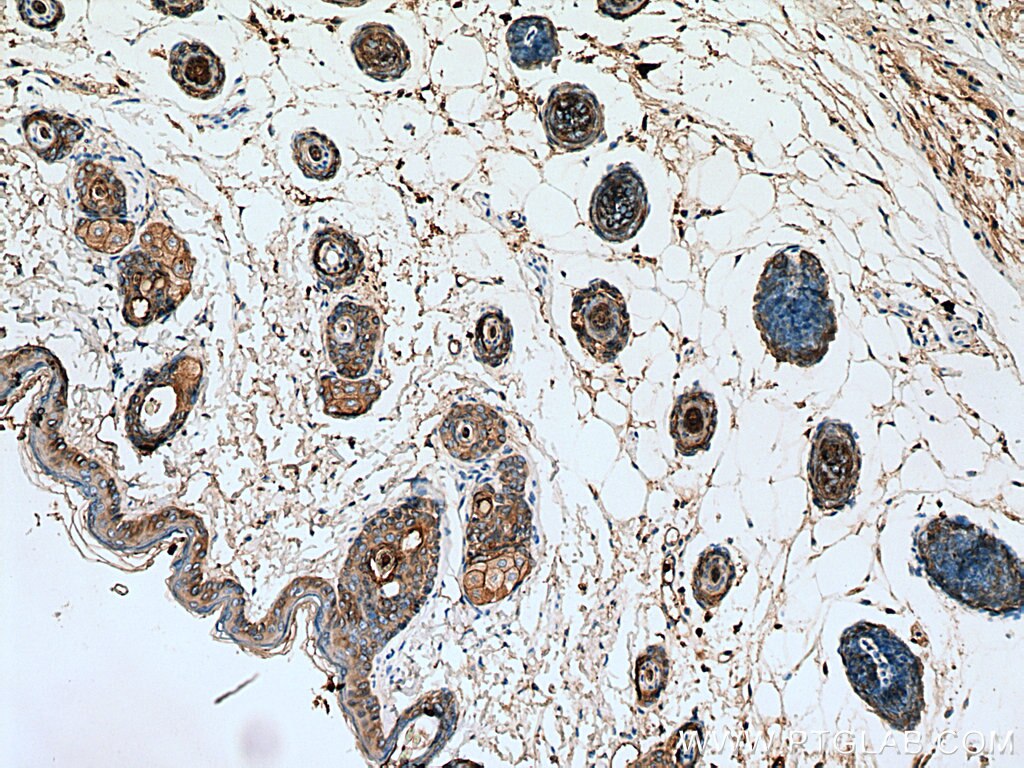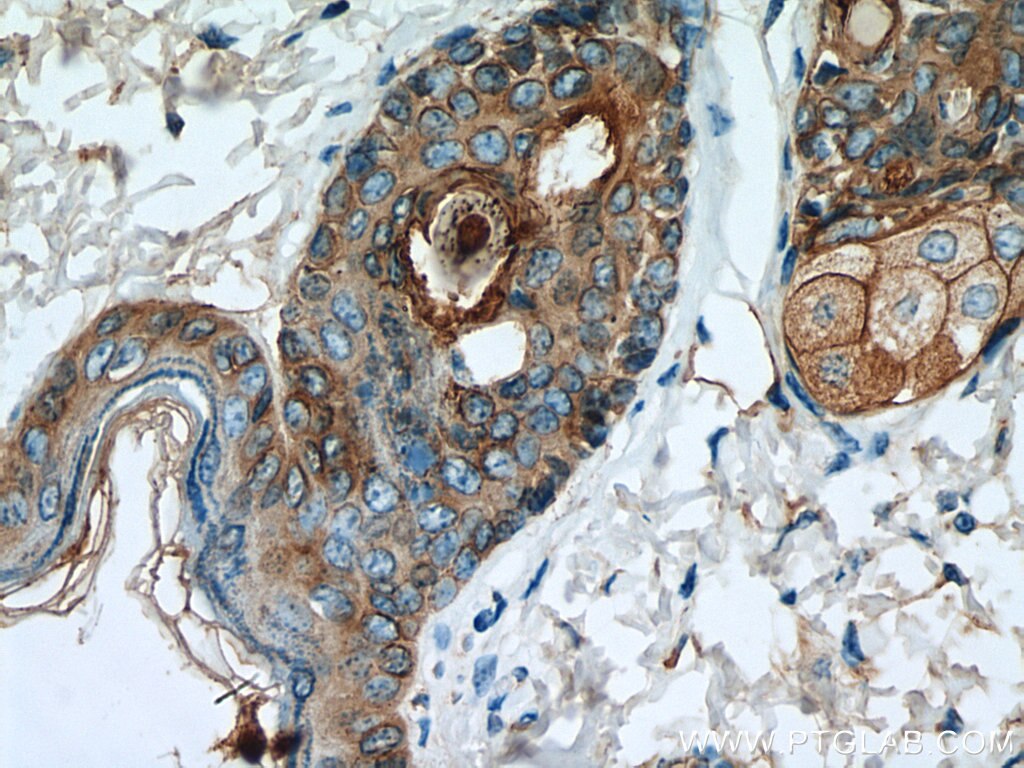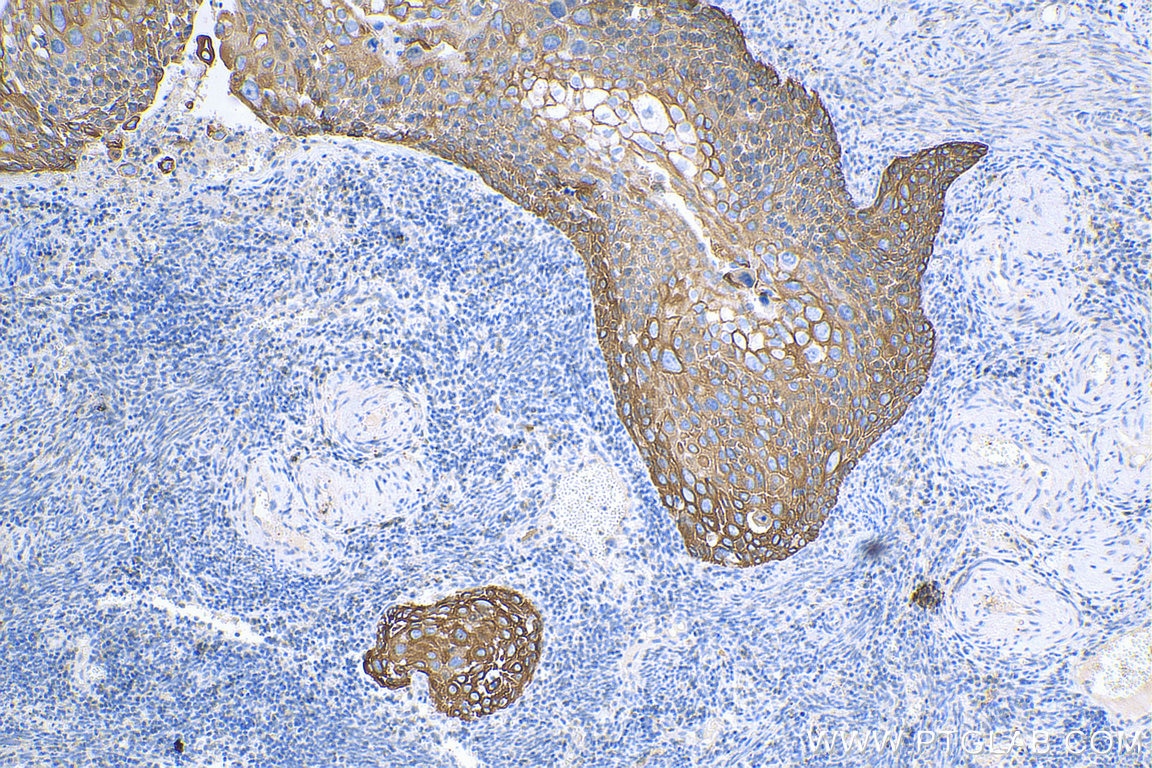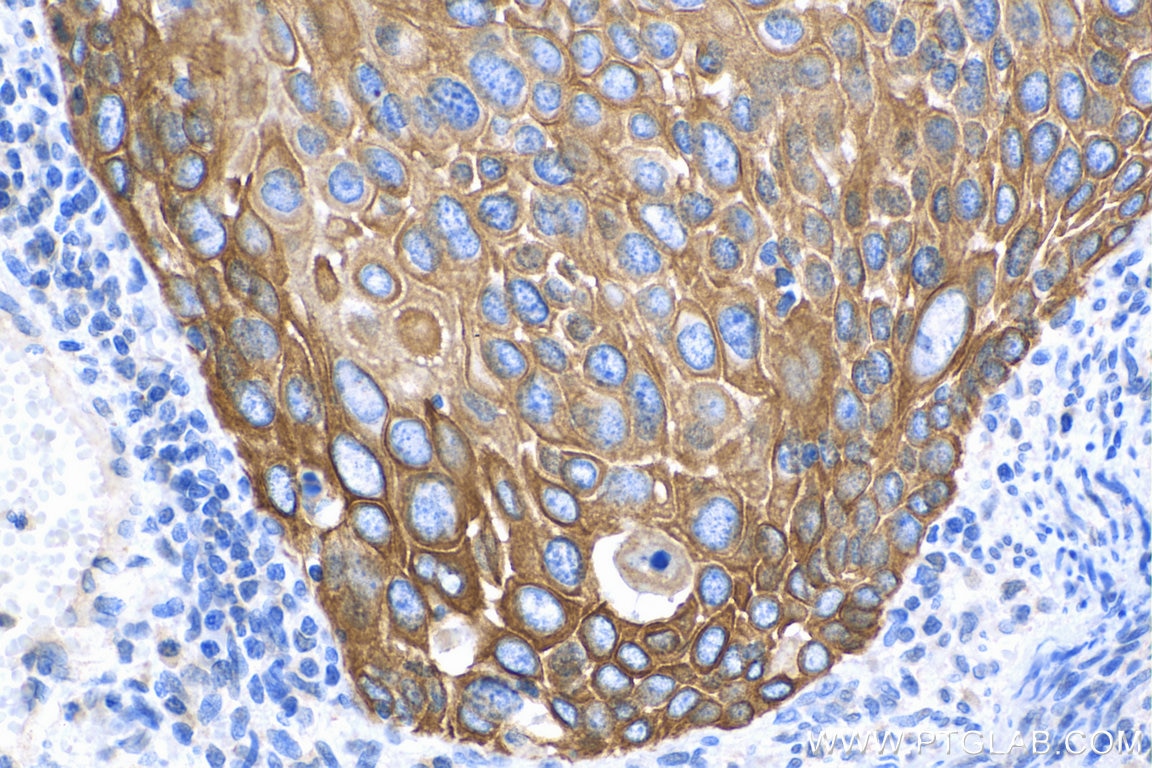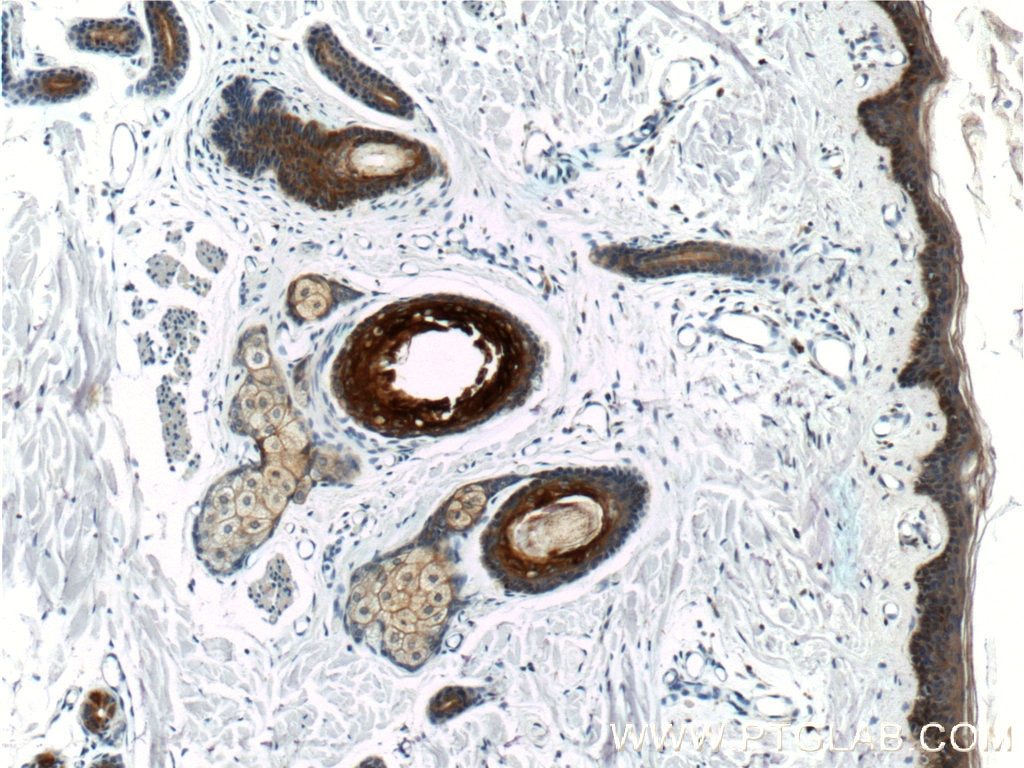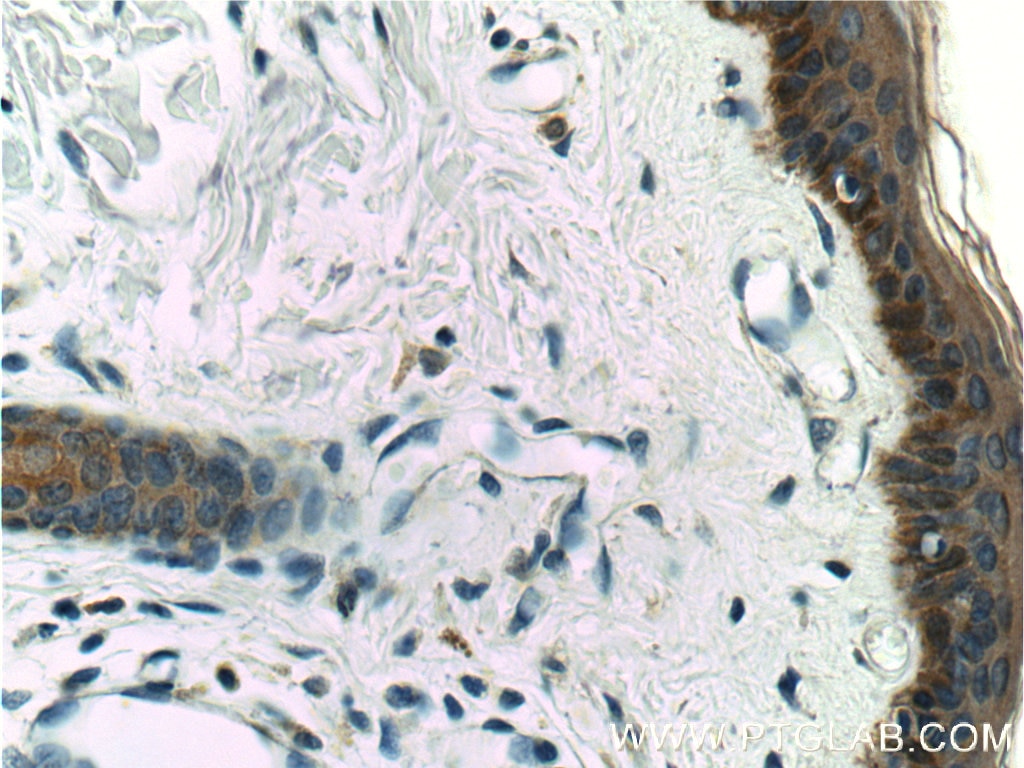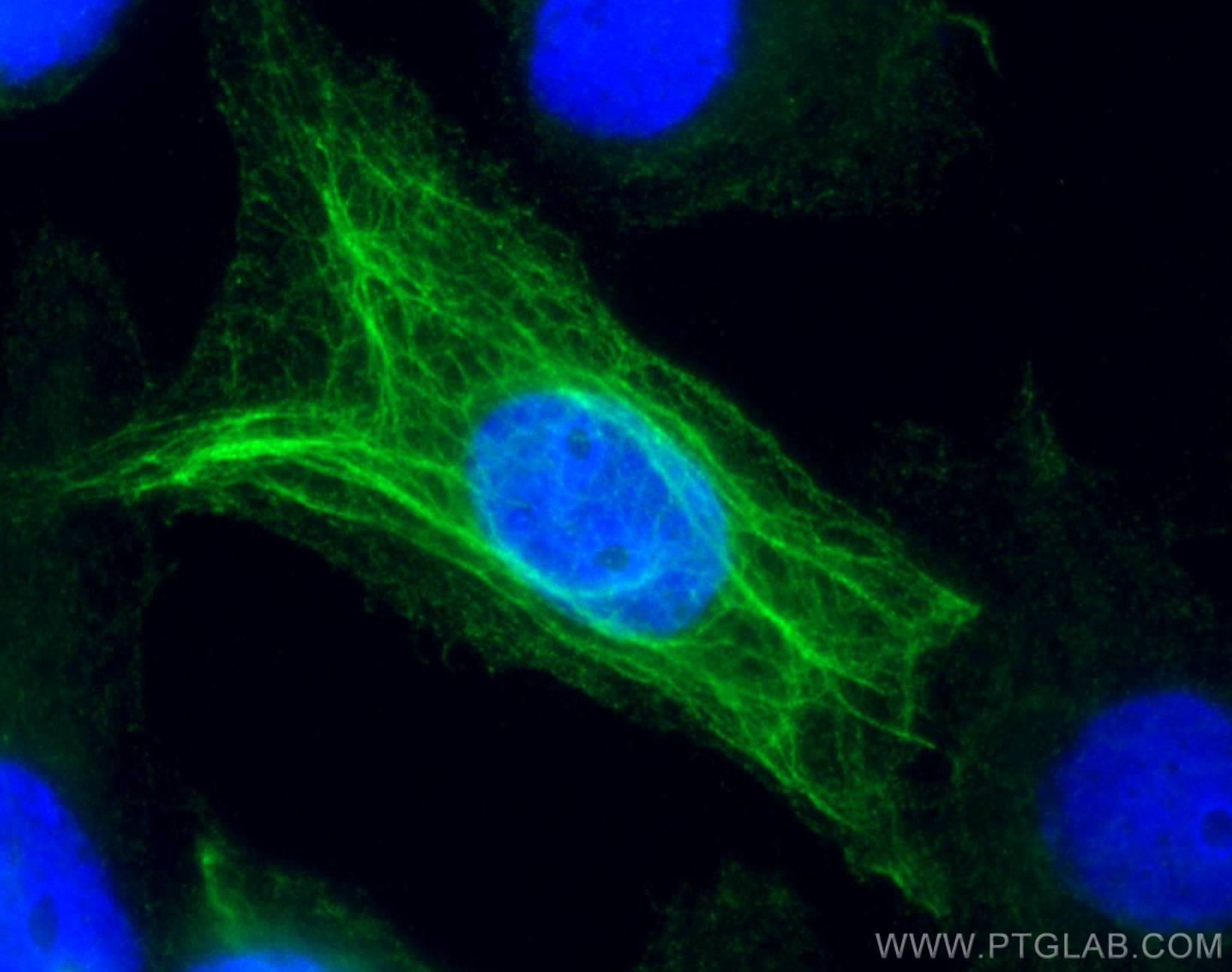Anticorps Polyclonal de lapin anti-Cytokeratin 16
Cytokeratin 16 Polyclonal Antibody for WB, IHC, IF/ICC, ELISA
Hôte / Isotype
Lapin / IgG
Réactivité testée
Humain, souris
Applications
WB, IHC, IF/ICC, ELISA
Conjugaison
Non conjugué
N° de cat : 17265-1-AP
Synonymes
Galerie de données de validation
Applications testées
| Résultats positifs en WB | cellules HeLa, cellules A375, cellules MCF-7 |
| Résultats positifs en IHC | tissu de cancer de l'œsophage humain, tissu cutané de souris, tissu cutané humain, tissu de cancer du col de l'utérus humain il est suggéré de démasquer l'antigène avec un tampon de TE buffer pH 9.0; (*) À défaut, 'le démasquage de l'antigène peut être 'effectué avec un tampon citrate pH 6,0. |
| Résultats positifs en IF/ICC | cellules A431, |
Dilution recommandée
| Application | Dilution |
|---|---|
| Western Blot (WB) | WB : 1:5000-1:50000 |
| Immunohistochimie (IHC) | IHC : 1:500-1:2000 |
| Immunofluorescence (IF)/ICC | IF/ICC : 1:50-1:500 |
| It is recommended that this reagent should be titrated in each testing system to obtain optimal results. | |
| Sample-dependent, check data in validation data gallery | |
Applications publiées
| WB | See 4 publications below |
| IF | See 4 publications below |
Informations sur le produit
17265-1-AP cible Cytokeratin 16 dans les applications de WB, IHC, IF/ICC, ELISA et montre une réactivité avec des échantillons Humain, souris
| Réactivité | Humain, souris |
| Réactivité citée | Humain, souris |
| Hôte / Isotype | Lapin / IgG |
| Clonalité | Polyclonal |
| Type | Anticorps |
| Immunogène | Cytokeratin 16 Protéine recombinante Ag10999 |
| Nom complet | keratin 16 |
| Masse moléculaire calculée | 473 aa, 51 kDa |
| Poids moléculaire observé | 48 kDa |
| Numéro d’acquisition GenBank | BC039169 |
| Symbole du gène | Cytokeratin 16 |
| Identification du gène (NCBI) | 3868 |
| Conjugaison | Non conjugué |
| Forme | Liquide |
| Méthode de purification | Purification par affinité contre l'antigène |
| Tampon de stockage | PBS with 0.02% sodium azide and 50% glycerol |
| Conditions de stockage | Stocker à -20°C. Stable pendant un an après l'expédition. L'aliquotage n'est pas nécessaire pour le stockage à -20oC Les 20ul contiennent 0,1% de BSA. |
Informations générales
Keratins are a large family of proteins that form the intermediate filament cytoskeleton of epithelial cells, which are classified into two major sequence types. Type I keratins are a group of acidic intermediate filament proteins, including K9-K23, and the hair keratins Ha1-Ha8. Type II keratins are the basic or neutral courterparts to the acidic type I keratins, including K1-K8, and the hair keratins, Hb1-Hb6. Keratin 16 is a type I cytokeratin. It is paired with keratin 6 in a number of epithelial tissues, including nail bed, esophagus, tongue, and hair follicles.
Protocole
| Product Specific Protocols | |
|---|---|
| WB protocol for Cytokeratin 16 antibody 17265-1-AP | Download protocol |
| IHC protocol for Cytokeratin 16 antibody 17265-1-AP | Download protocol |
| IF protocol for Cytokeratin 16 antibody 17265-1-AP | Download protocol |
| Standard Protocols | |
|---|---|
| Click here to view our Standard Protocols |
Publications
| Species | Application | Title |
|---|---|---|
Phytother Res Epigallocatechin-3-gallate promotes wound healing response in diabetic mice by activating keratinocytes and promoting re-epithelialization | ||
Int J Clin Exp Pathol Wnt/β-catenin signaling regulates pathogenesis of human middle ear cholesteatoma | ||
Discov Oncol Identification of KRT16 and ANXA10 as cell cycle regulation genes for lung adenocarcinoma based on self-transcriptome sequencing of surgical samples and TCGA public data mining | ||
Invest Ophthalmol Vis Sci Modeling Neuropathic Corneal Pain: Pulled Nerve Approach With Elevated Krt16 Gene Expression | ||
Cell Rep Med Co-targeting BMI1 and MYC to eliminate cancer stem cells in squamous cell carcinoma | ||
Immunity Skin immune-mesenchymal interplay within tertiarylymphoid structures promotes autoimmunepathogenesis in hidradenitis suppurativa |
